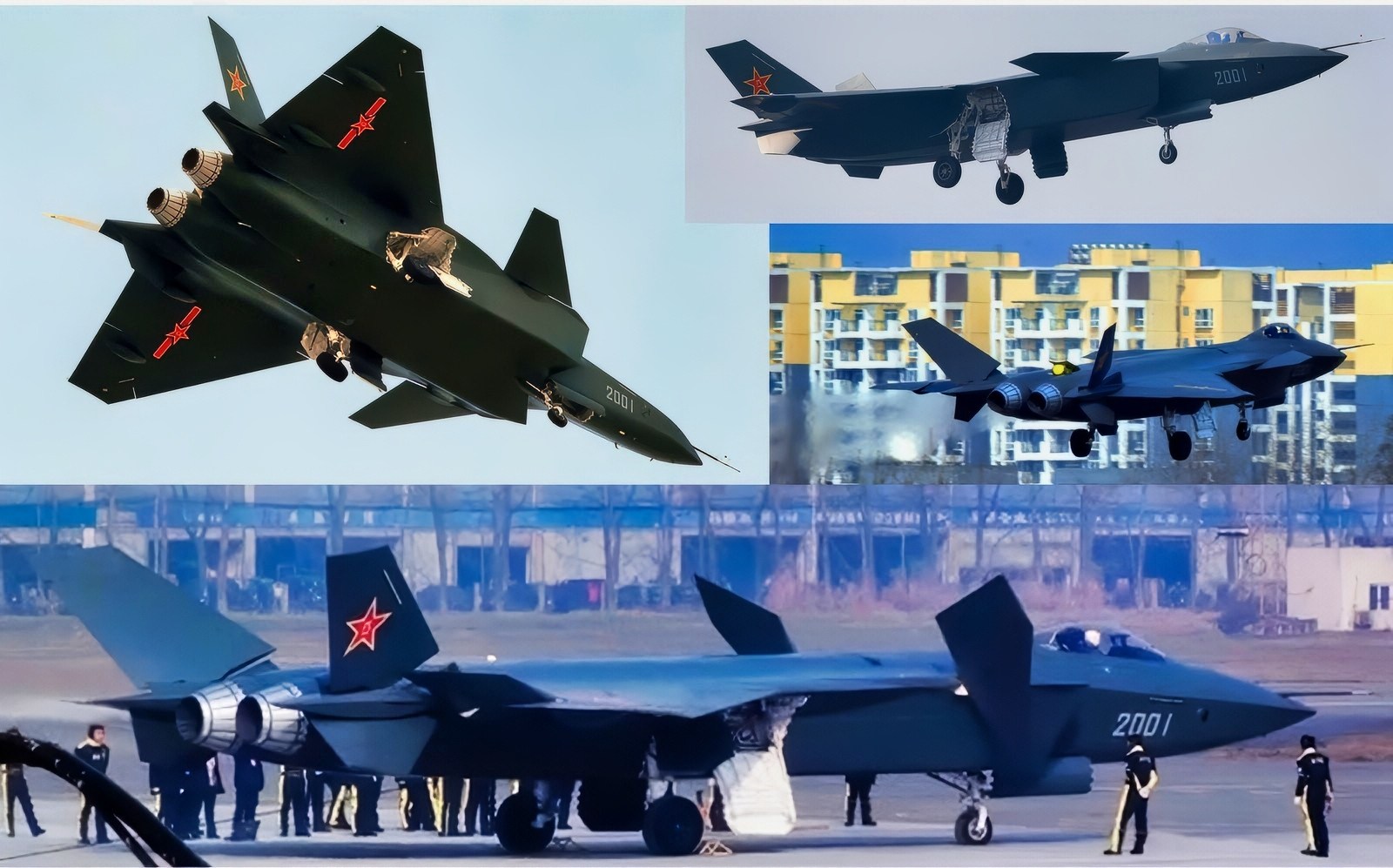Key Points and Summary – A critical analysis of China’s J-20 “Mighty Dragon” identifies five major weaknesses.
-First, its stealth is questionable, compromised by canards, exposed engine nozzles, and poor manufacturing quality.

China’s J-20 Stealth Fighter. Image Credit: Chinese Weibo/Screenshot.
-Second, it has zero combat experience, unlike its battle-tested F-35 rival.
-Third, its engines are weaker, with the domestic WS-15 struggling to match the performance and reliability of U.S. powerplants like the F-22’s F119.
-Fourth, its avionics are subpar, lacking the “learning” and sophisticated sensor fusion of the F-35. Fifth, it has weight issues that hinder performance.
A bonus flaw is its lack of an internal cannon, a “last line of defense” it omits, making it vulnerable in a close-range dogfight.
Five Weaknesses of China’s J-20 Mighty Dragon
China has pinned its military hopes on the J-20 Mighty Dragon stealth fighter jet.
The People’s Liberation Army Air Force (PLAAF) has at least 250 J-20s and perhaps as many as 500, with more new jets coming online every month.
The J-20 is a quality fifth-generation fighter, and China is one of the only countries in the world with two such models – the J-20 and the J-35. But the J-20 does have its share of weaknesses – let’s take a closer look at these troubling aspects.
Is This Warbird Really That Stealthy?
First, there is the level of radar evasion.
The Chinese are prone to overstate the effectiveness of aircraft features across the PLAAF.
They may have overstated the extent to which J-20s can be invisible to radar. The Mighty Dragon is not as stealthy as the F-35 and F-22.
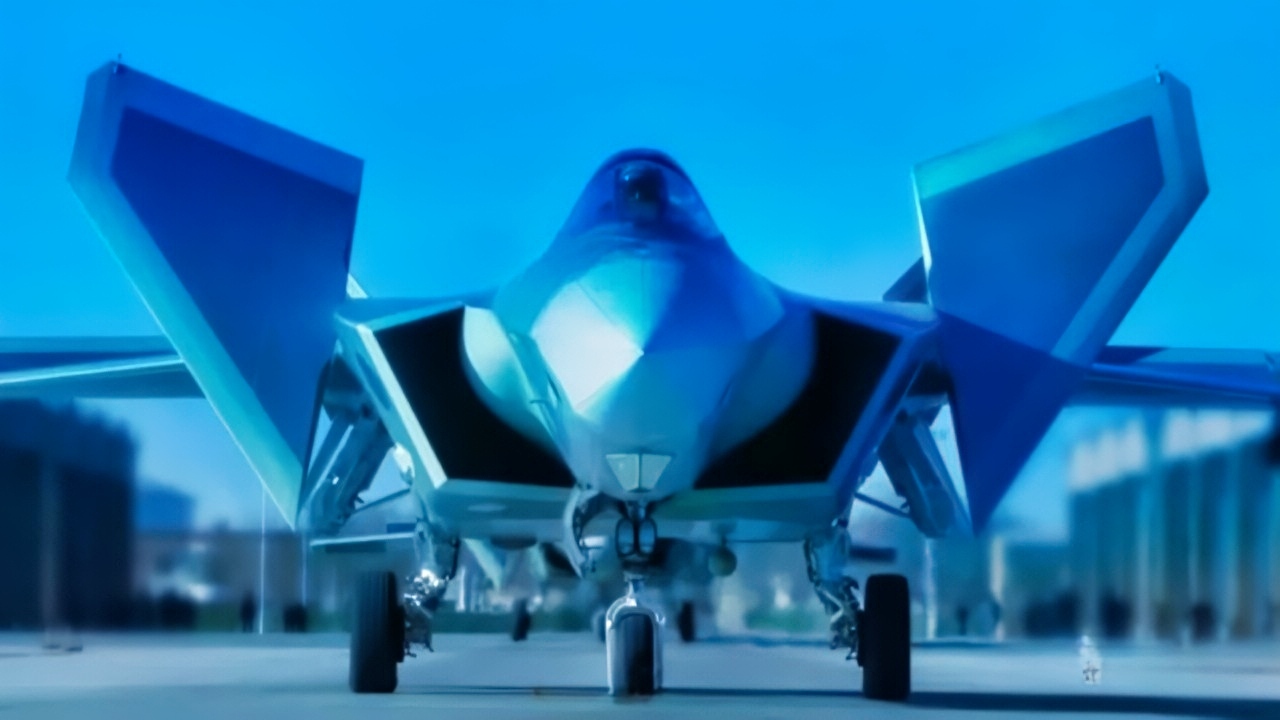
J-20 Fighter Ready. Image Credit: PLAAF.
The level of technology and radar-absorbing coatings is just not as good.
In fact, the J-20 may be considered an aircraft with some stealth characteristics rather than a fully radar-evading aircraft.
One of the problems with the J-20’s stealth profile is the engine nozzles, which increase the airplane’s radar cross-section.
The canards also do not lend themselves to full radar evasion capabilities.
The Chinese also lack the advanced aerospace manufacturing capabilities to produce fully stealth fighters.
One can see a glimpse of the rivets, and some panels are not aligned, which increases the radar cross section. This makes the J-20 more observable than American stealth airplanes.
The J-20 Is Not Combat Tested
Second, the J-20 has no combat experience. While the United States and allies such as Israel have used the F-35 in ground strike mode during combat encounters, the PLAAF has not deployed the J-20 in real-life “hot” shooting.
Of course, the Chinese have not fought a war since 1979 in a brief showdown with Vietnam. Pilots instead gather experience through “gray zone” activities, rather than in Taiwan.
PLAAF pilots push their J-20s into Taiwan’s air defense identification zone and try to sneak past radar and air defense systems.
This is not the same as actual combat, but for the PLAAF, these operations are deadly serious and rehearsals for the real thing. The J-20 will be necessary for attacking Taiwan and suppressing its air defenses on Day One of battle.
It will be instrumental in enforcing a no-fly zone if the People’s Republic decides to blockade or quarantine the island. China has not yet experienced real combat.
The J-20 Has Weaker Engines
Third, China has endured a complex process with the J-20’s engines.
They just do not have the thrust and climb performance of the F-35 and F-22.
The F-22 is especially able to conduct better maneuvers than the J-20.
The Pratt & Whitney F119-PW-100 turbofan on the F-22 is a superior powerplant. It enables supercruise without afterburners.
“The F119 engine delivers unparalleled aircraft maneuverability with its unique two-dimensional pitch vectoring exhaust nozzle. This convergent/divergent nozzle vectors thrust as much as 20 degrees up or down” according to Pratt & Whitney.
Early J-20 engines were Russian-made, underpowered, and inefficient. The Chinese WS-15 engine is better, but it is not as good as the F119.
The WS-15 may not be as reliable, requiring more maintenance and leading to problems that keep the J-20 off the flight line. The J-20 may not get as much performance from the WS-15 as would match the other qualities of the airplane.
Avionics and Software Are Not the Best
Fourth, the avionics may be a weak spot. The PLAAF is using an avionics suite it employed on its fourth-generation aircraft and has transferred to the J-20.
The level of sensor fusion is weak and not as good as similar capabilities on American fifth-generation jets. The F-35 has much better electronic warfare ability.
The Lightning II is also a “flying computer” that has mission data files. The F-35 “learns” after each mission, and this analysis can be uploaded to the mission data files upon completion of the operation.
The J-20 does not have these capabilities.
Added Weight Can Affect Performance
Fifth, the J-20 has issues with its maximum take-off weight that can affect its performance. It may lose maneuverability in “beast mode,” for example, as speed, thrust, and climbing ability suffer from a larger weapons payload.
Plus, adding external fuel tanks can increase the weight.
No On-Board Gun
Let’s add a sixth problem while I am at it. The J-20 does not have a cannon on board. The manufacturer believed the Mighty Dragon would be ideal for beyond-visual-range missiles such as the PL-15 and PL-17.
This would eliminate the threat before they could be in close range. The PL-10 short-range missile is usually sufficient, but what if that projectile doesn’t work?
Many dogfights devolve into short-range engagements that are too close in range to use missiles, and the J-20 does not have that last line of defense.
The biggest problem I see, though, is the J-20’s lack of stealth and combat experience. American pilots are better trained and have seen what it takes during real war-fighting missions.
The United States instills in its pilots a better sense of confidence and elite abilities known as having the “right stuff.”
The PLAAF aviators just do not have the level of skill that the U.S. Air Force breeds in their pilots.
J-20 Mighty Dragon Photo Essay
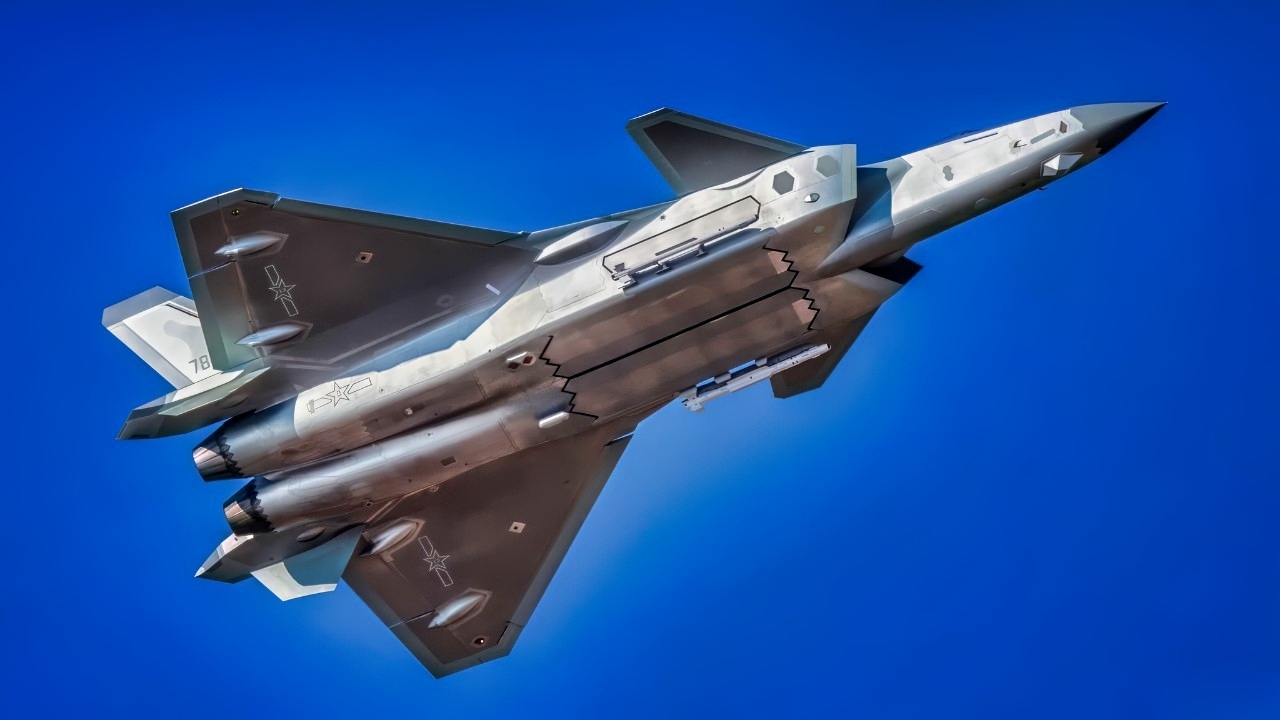
J-20 Takes Flight For China. Image Credit: Creative Commons/PLAAF.

China J-20 Fighter Yellow. Image Credit: Creative Commons.
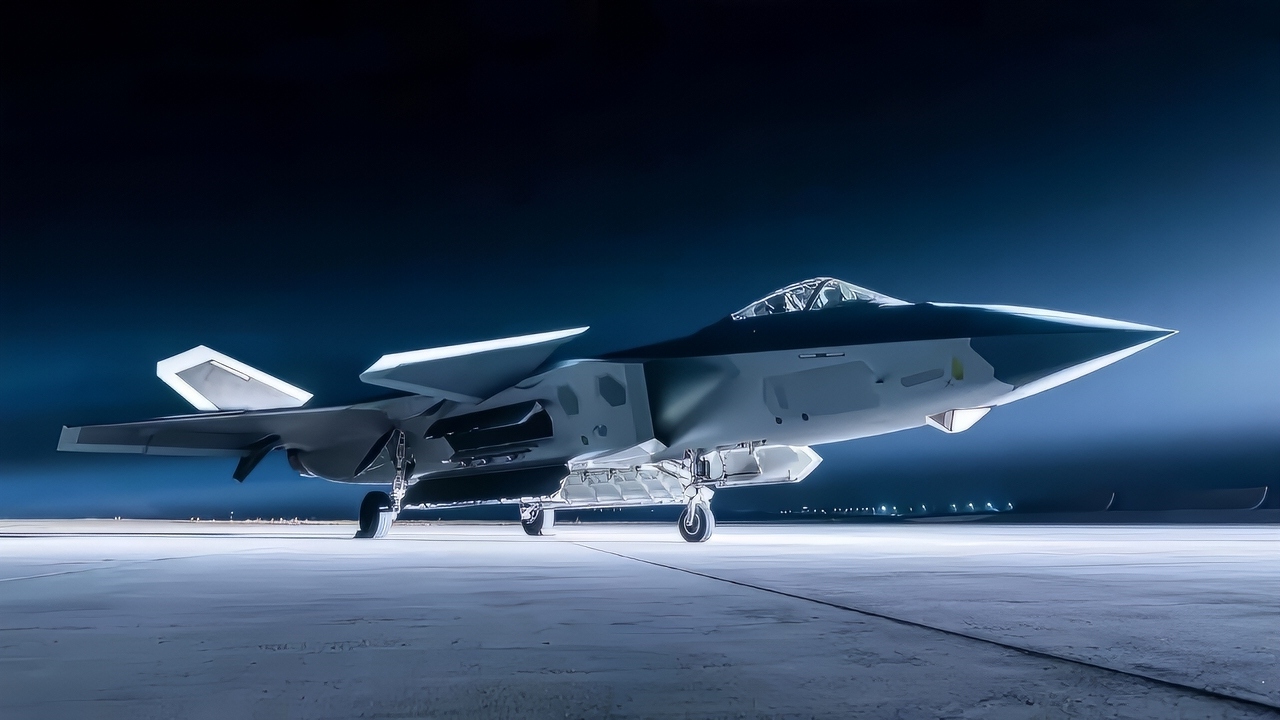
J-20 Fighter in the Dark. Image Credit: Creative Commons.
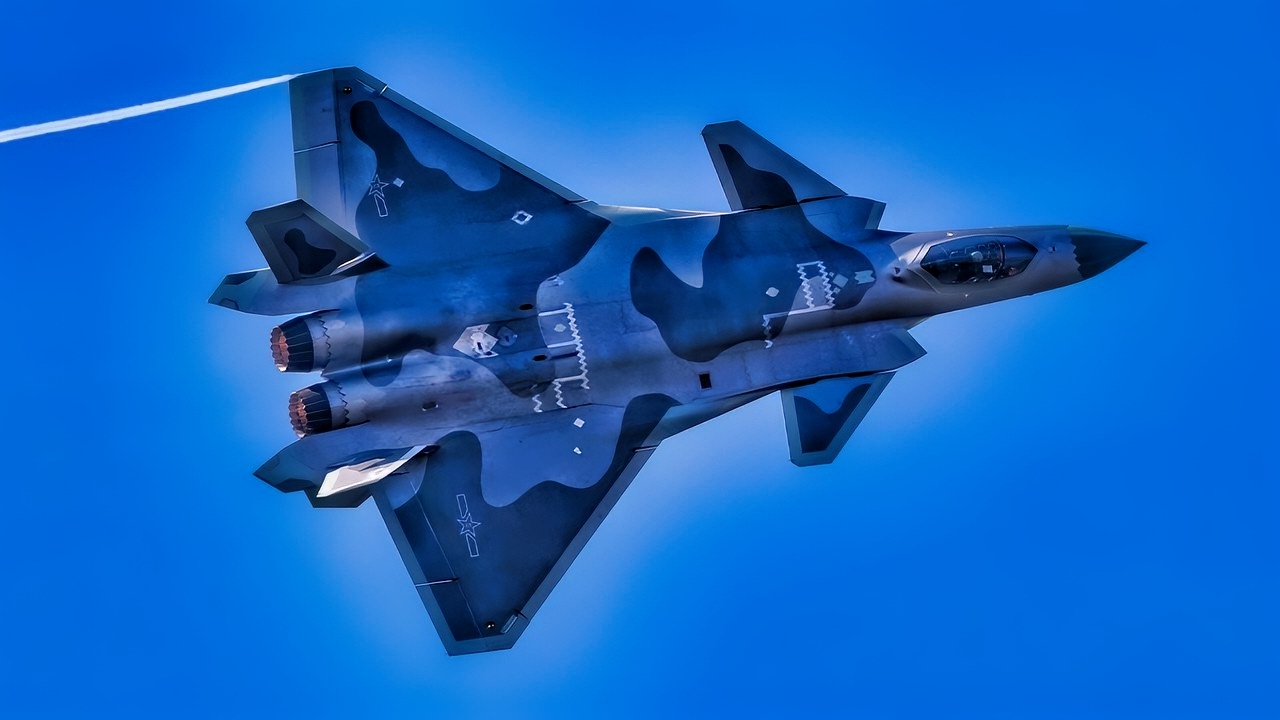
J-20 Fighter In New Paint Scheme. Image Credit: Creative Commons.

J-20 Mighty Dragon in Camo Back in 2018. Image Credit: Chinese Air Force.

Chinese J-20 Fighters. Image Credit: PLAAF.
About the Author: Brent M. Eastwood
Brent M. Eastwood, PhD is the author of Don’t Turn Your Back On the World: a Conservative Foreign Policy and Humans, Machines, and Data: Future Trends in Warfare plus two other books. Brent was the founder and CEO of a tech firm that predicted world events using artificial intelligence. He served as a legislative fellow for US Senator Tim Scott and advised the senator on defense and foreign policy issues. He has taught at American University, George Washington University, and George Mason University. Brent is a former US Army Infantry officer. He can be followed on X @BMEastwood.
More Military
‘Long Way from Production’: China’s J-36 Might Be ‘Paper Tiger’ Stealth Fighter
‘Mach 2’ JAS 39 Gripen Is a Rocket Fighter Plane
New ‘Ferrari’ F-35 Stealth Fighter Is Aimed Right at Russia and China
Putin’s Poseidon Nuclear “Doomsday” Torpedo Looks Like a Bluff
The Air Force’s B-21 Raider Stealth Bomber Plan Doesn’t Make Any Sense


